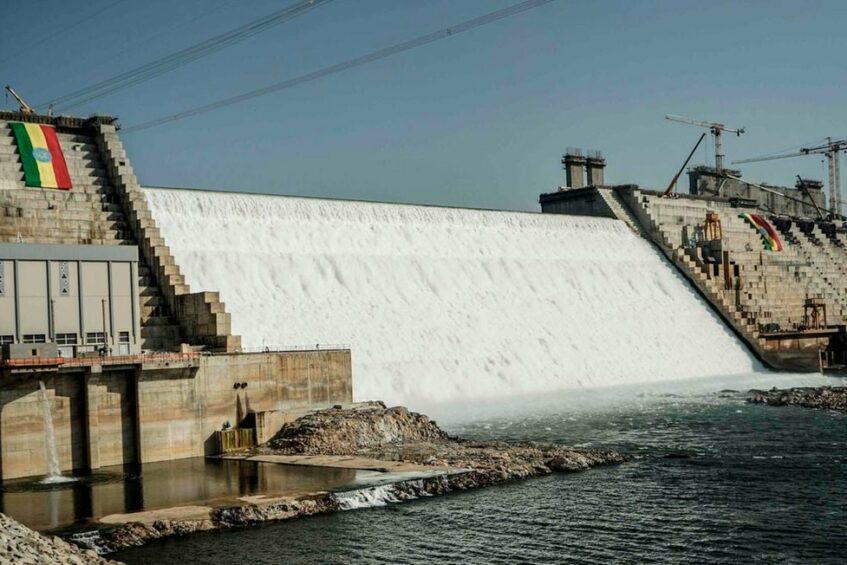
The Grand Ethiopian Renaissance Dam in Guba, Ethiopia on February 19, 2022. PHOTO | AMANUEL SILESHI | AFP
Ethiopia is set to launch the fourth filling of its mega-dam that is built on the Blue Nile, the country’s deputy Prime Minister announced.
The Grand Ethiopian Renaissance Dam (GERD) is a gravity dam built with the purpose of electricity production to relieve Ethiopia’s acute energy shortage and for electricity export to neighboring countries.
The massive dam that costs Addis Ababa $4.2 billion – has been the center of dispute with downstream countries like Egypt since the beginning of its construction in 2011.
Deputy Prime Minister Demeke Meckonen, who also serves as the country’s Foreign Minister said the fourth filling will not have any negative impact on downstream countries.
“The GERD is now approaching its fourth filling. The last three fillings have not affected lower riparian states. Likewise the rest of the fillings will not have any difference,” Mekonnen said according to French News Agency AFP.
He was reportedly speaking during a conference on the Nile in Addis Ababa on Thursday.
“The project is near completion, withstanding the rhetoric of some actors that seek to monopolize the use of the shared African river.”
Foreign ministers from the other Nile basin countries including South Sudan, Democratic Republic of Congo, Uganda and Tanzania were present in the high-level round table.
But representatives from Sudan and Egypt were reportedly absent in the meeting.
Egypt is one of the driest countries in the world and depends on the Nile for 97 percent of water for its domestic use.
Cairo sees the dam as an “existential threat” and fears its filling could drastically reduce the amount of water flowing downstream.
But Sudan, which is currently wracked by deadly conflict has not made its position clear.
South Sudan is currently awaiting an ongoing Environmental and Social Impact Assessment before embarking on a controversial project to deepen the Naam tributary in Unity State.
The initiative is viewed by government officials, including several vice presidents, as a move to help open up rivers for economic activity and help mitigate floods that have affected most of the country.
But some environmentalists and activists believe that the plan would result in environmental and economic catastrophe, drying up the country’s White Nile river and the Sudd wetlands.
For four years, South Sudan has been experiencing extreme flooding leaving 1.2 million people affected by flooding across the country.
Support Eye Radio, the first independent radio broadcaster of news, information & entertainment in South Sudan.
Make a monthly or a one off contribution.
Copyright 2024. All rights reserved. Eye Radio is a product of Eye Media Limited.